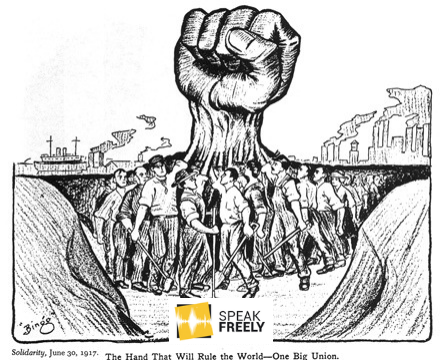Europe has been hit by a Green wave in politics, with environmentalists structurally outperforming establishment social democrat parties. But it isn’t so much about climate change as it is a rebranding of socialism for young voters. Beware of the consequences.
The Green Wave
Green parties, as a phenomenon, have their origins in Europe. In the 1970s, an increasing number of people were at odds with the mainstream party system, not necessarily because it was believed to hurt the environment but rather because it became complacent after being in power since the end of World War II. The Greens became a hip and new way of turning politics into an activist cause.
In Germany, early environmentalist politicians started by demonstrating against nuclear energy, preaching very early on that the country should switch to alternative energy sources. In their first election participation in 1980 (in what was then West Germany), the German Greens got 1.5 percent of the vote but made the jump into parliament three years later, after a snap election. Ever since, the party has hovered between 8 and 10 percent and even participated in a federal government coalition with social democrats between 1998 and 2005.
But interestingly, in the process of establishing a new mainstream party, the Greens also made enemies on the left. The Global Greens website elaborates quite accurately on the history of its own movement:
“The ecological crisis is a crisis that affects not one class but the whole of humankind. In fact, in the 1970s, both conservative and socialist parties did their best to uphold the ideology of unlimited economic growth solving all problems against the growing environmental movements—trade unions often being in the forefront of the opposition to ecological policies…”
This is one of the reasons the Greens haven’t quite made it into becoming a mainstream party just yet: many jobs are still in, or related to, heavy industry. No coal plant worker will vote to close down his own plant to then find himself with a higher electricity bill.
However, the Green wave is still real, most notably because Green Party positions appeal to young people who are not in the agricultural or industrial sectors. Young students are drawn to the green phenomenon mainly because it promises welfare spending that would give them debt-free and tuition-free higher education, as well as minimum wages that some young professionals can only dream of today.
This is the reason, in the last months and years, Green parties have scored noticeable successes. Greens are present in 8 out of 16 German state governments, and they doubled their seats in the largest state— Bavaria—just over a week ago. On the same weekend, Greens in Luxembourg went from their previous 10 percent to 15 percent, prolonging their participation in government. In 2015 and 2016, Raimonds Vējonis (Latvia) and Alexander Van der Bellen (Austria) became Europe’s first two Green heads of state.
Greens also score good results in countries like Hungary, New Zealand, and the Netherlands. In a number of countries, their influence drops because of the restrictiveness of the electoral systems, as winner-takes-it-all voting systems benefit the Greens who cannot shine with strong candidates on their ballots.
Outlandish Demands
In reality, the Green Party movement has been a re-branding of old socialist ideas, as social democratic movements—across Europe, in particular—are declining. Greens have been responsible for the German “Energiewende” (energy transition), which phases out nuclear energy completely and has come at a massive cost to German households. Wherever Greens govern, countries and local administrations see massive increases in deficits due to energy subsidization and increased welfare spending.
The Greens also get caught up in a number of contradictions. For instance, the UK’s Green Party, which was opposing Brexit, is also advocating for the re-nationalization of Britain’s private rail services, which the European Union does not allow under its rules.

If we match that with the plans of the US Green Party, the patterns are clearly visible. In a video produced with CNN in 2016, Green Party nominee Jill Stein elaborated on her party’s position, naming the following:
- Publicly funded political parties
- “Free” public higher education
- Bailing out students with their student loan debt
- A minimum wage of $15/hour
- 100 percent renewable energy by 2030
- Universal healthcare as a human right
Jill Stein didn’t invent anything new: Green parties have made these demands for decades and have picked up steam through young voters. All they did was extract consideration for industry workers, focusing instead on the welfare of those generations who are in a purely academic setting. They are, in fact, just rebranding old socialist ideas that originated in intellectual circles more than a century ago.
They are, in fact, just like a watermelon: green on the outside, red on the inside.
This piece solely expresses the opinion of the author and not necessarily the organisation as a whole. Students For Liberty is committed to facilitating a broad dialogue for liberty, representing a variety of opinions. If you’re a student interested in presenting your perspective on this blog, click here to submit a guest post!
Image: Wikipedia
This piece was originally published at FEE
